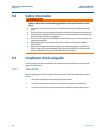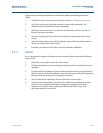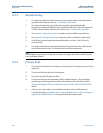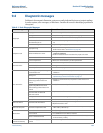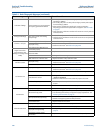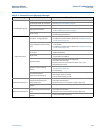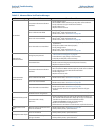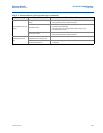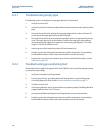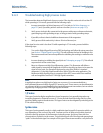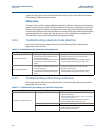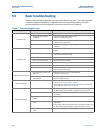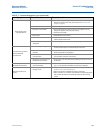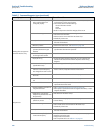
158
Reference Manual
00809-0100-4444, Rev AC
Section 9: Troubleshooting
January 2015
Troubleshooting
9.4.1 Troubleshooting empty pipe
The following actions can be taken if empty pipe detection is unexpected:
1. Verify the sensor is full.
2. Verify the sensor has not been installed with a measurement electrode at the top of the
pipe.
3. Decrease the sensitivity by setting the empty pipe trigger level to a value of at least 20
counts above the empty pipe value read with a full pipe.
4. Decrease the sensitivity by increasing the empty pipe counts to compensate for process
noise. The empty pipe counts is the number of consecutive empty pipe value readings
above the empty pipe trigger level required to set the empty pipe diagnostic. The count
range is 2-50, factory default set at 5.
5. Increase process fluid conductivity above 50 microsiemens/cm.
6. Properly connect the wiring between the sensor and the transmitter. Corresponding
terminal block numbers in the sensor and transmitter must be connected.
7. Perform the sensor electrical resistance tests. For more detailed information, consult
Table 9-8 on page 168.
9.4.2 Troubleshooting ground/wiring fault
If transmitter detects high levels (greater than 5mV) 50/60 Hz noise caused by improper wiring
or poor process grounding:
1. Verify the transmitter is earth grounded.
2. Connect ground rings, grounding electrode, lining protector, or grounding straps.
Grounding diagrams can be found in Process reference connection on page 21.
3. Verify the sensor is full.
4. Verify wiring between sensor and transmitter is prepared properly. Shielding should be
stripped back less than 1 inch (25 mm).
5. Use separate shielded twisted pairs for wiring between sensor and transmitter.
6. Properly connect the wiring between the sensor and the transmitter. Corresponding
terminal block numbers in the sensor and transmitter must be connected.



